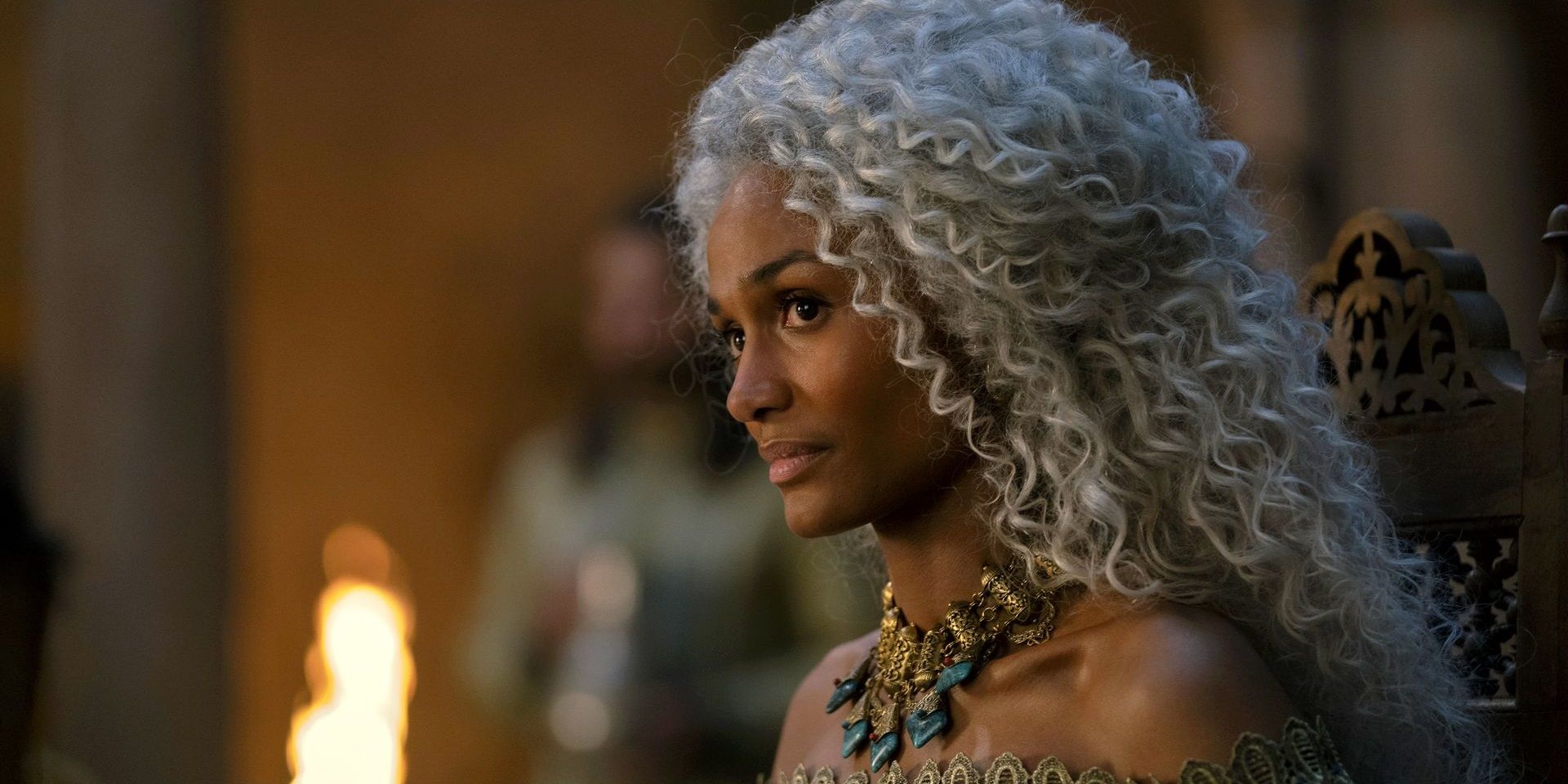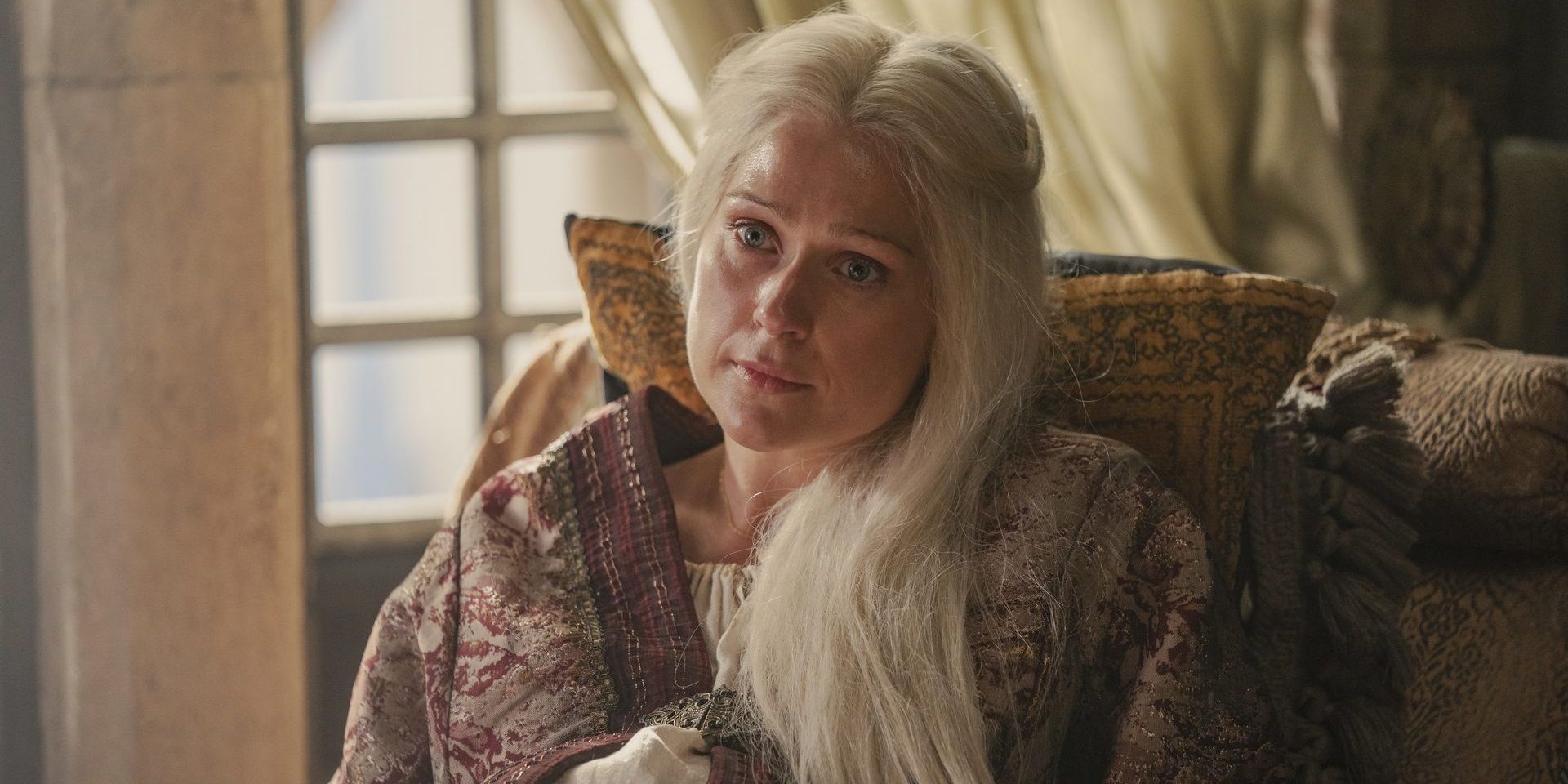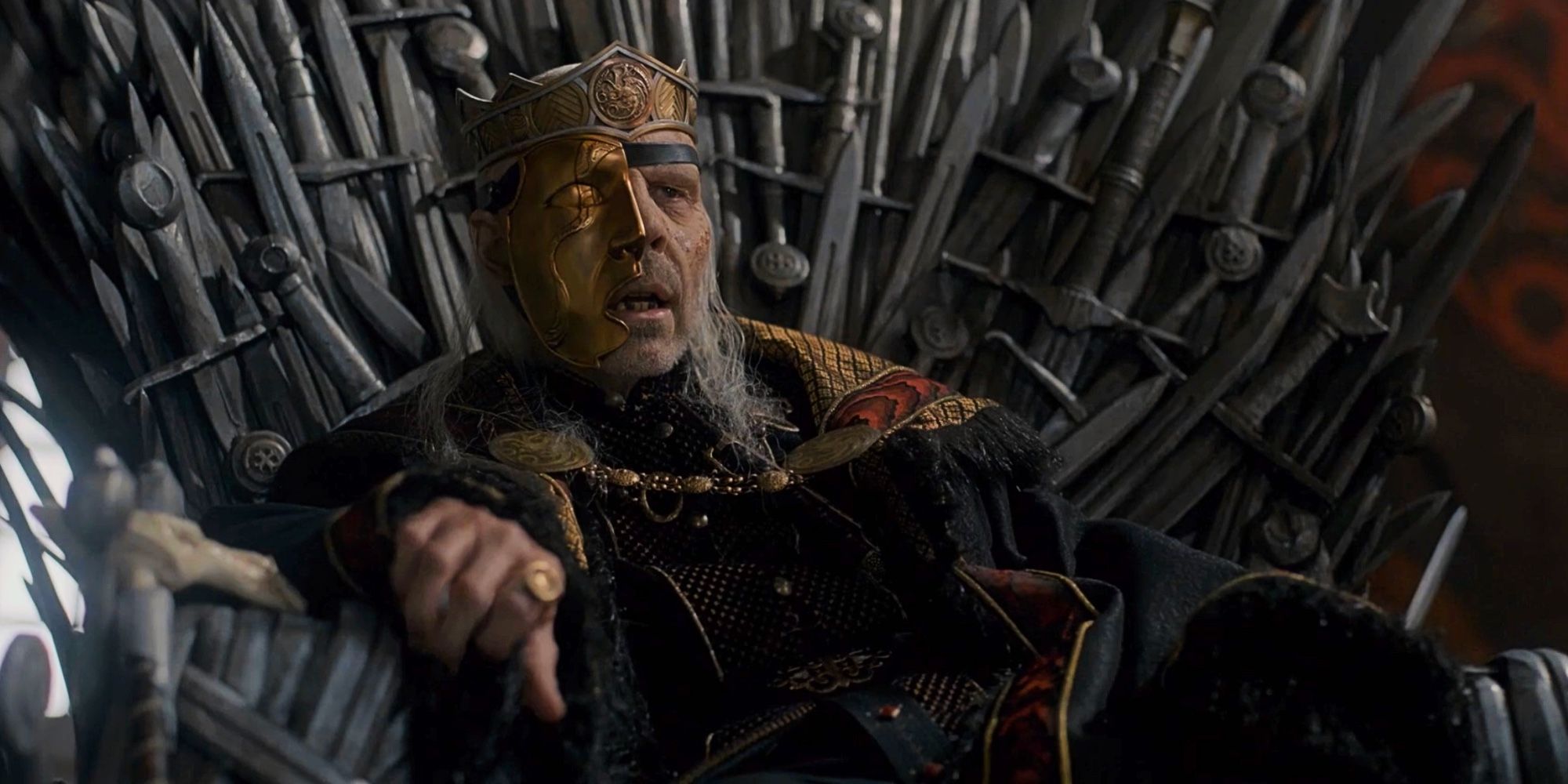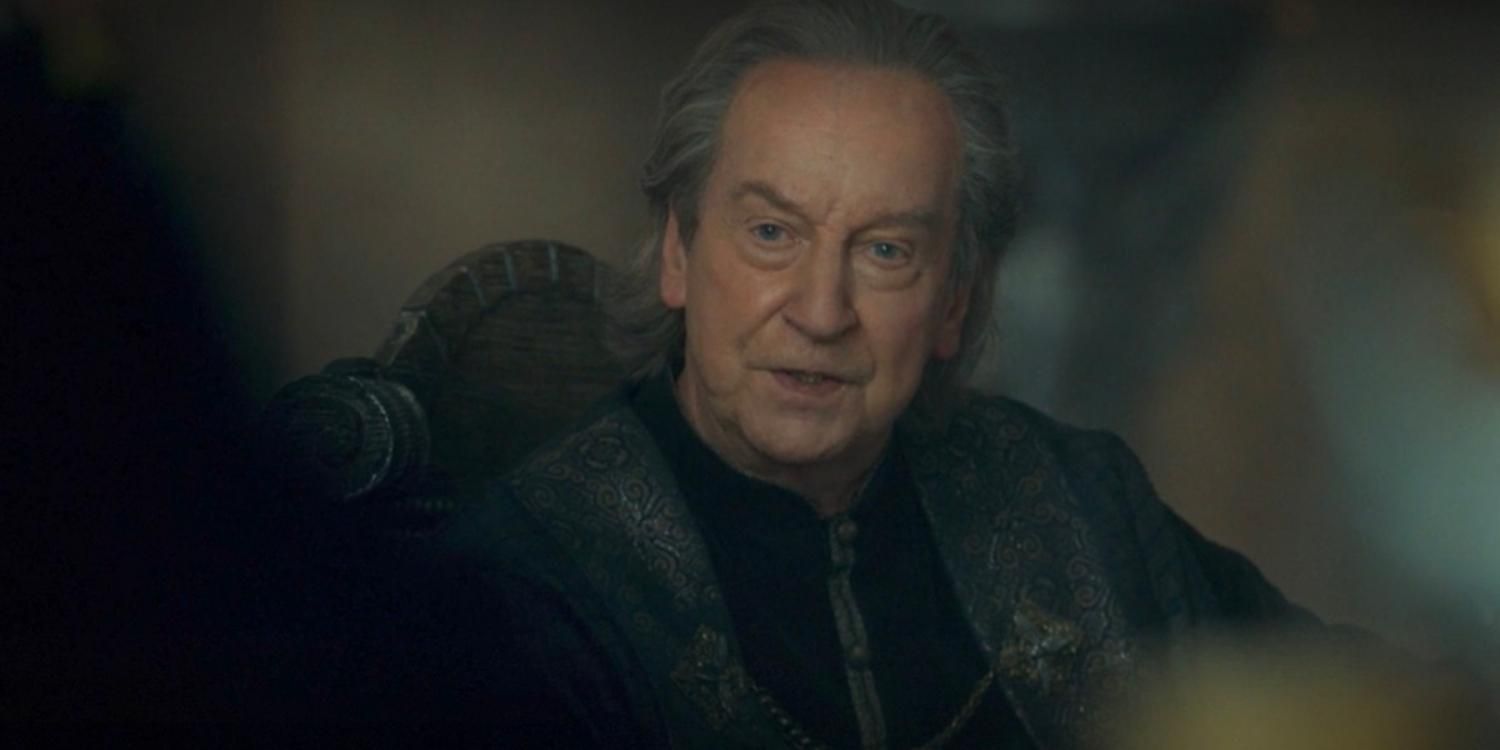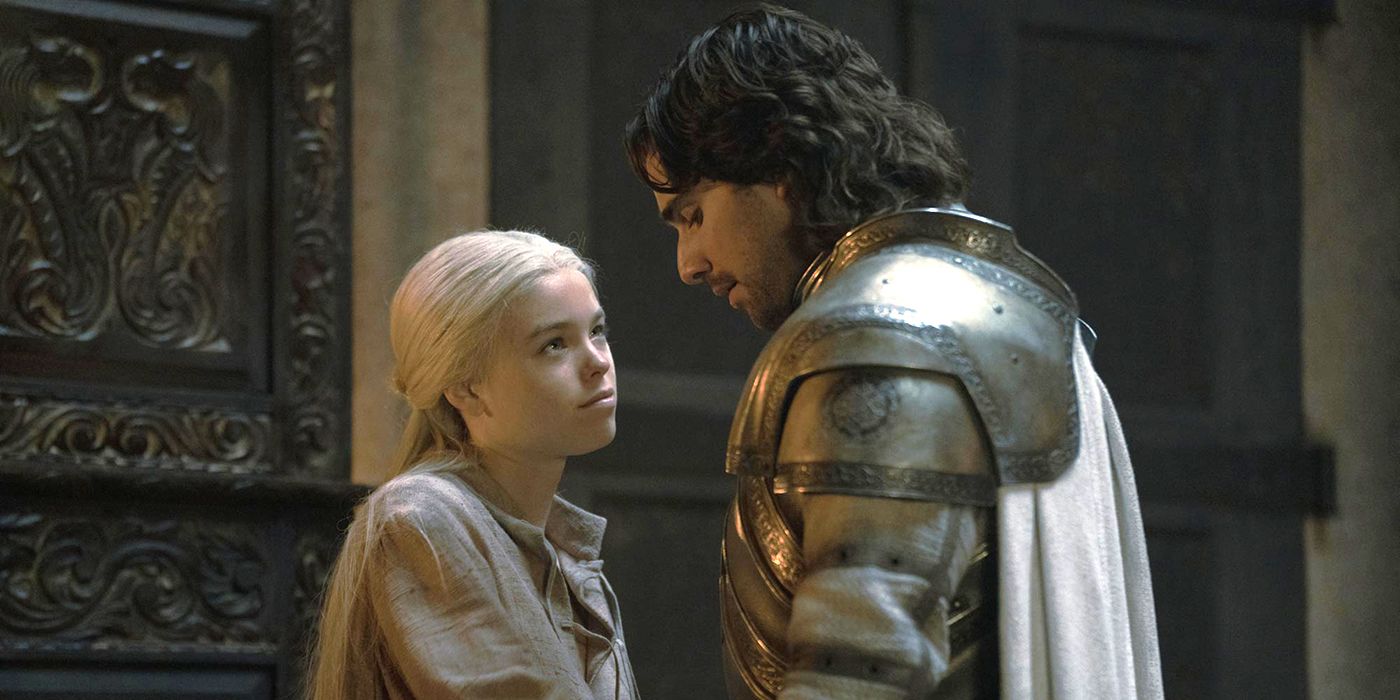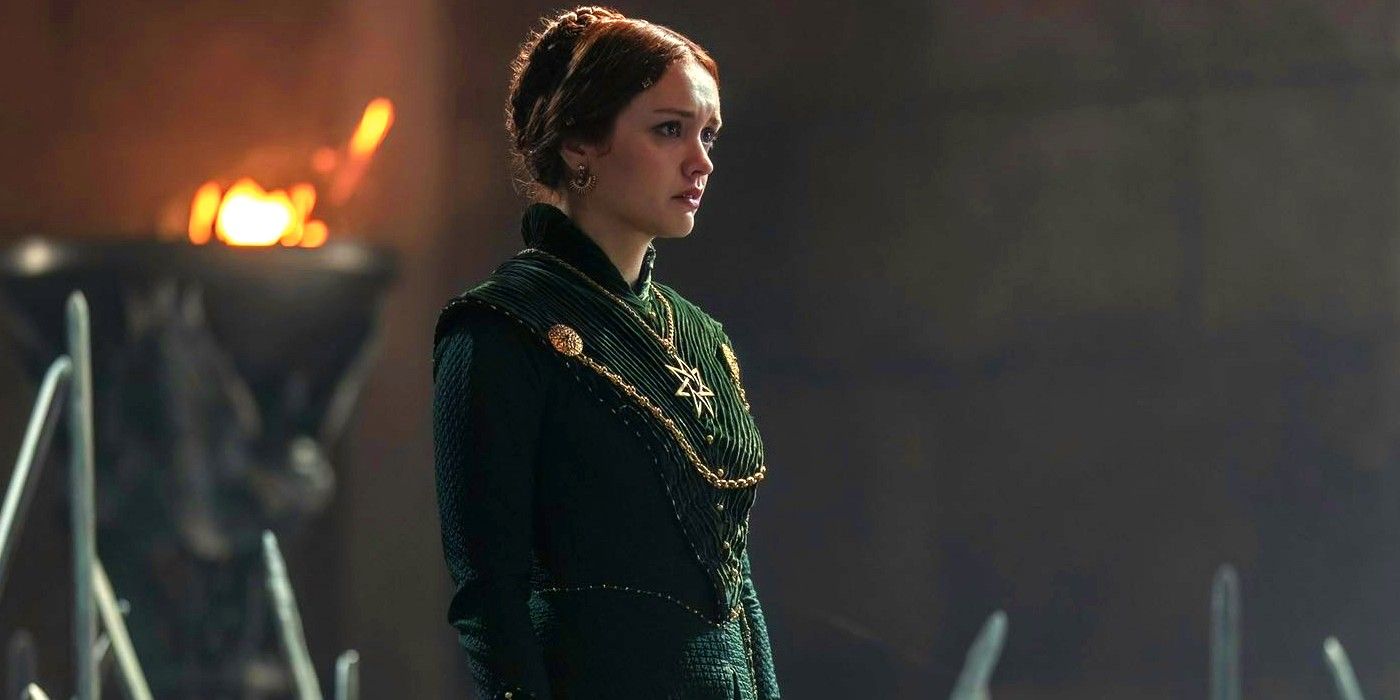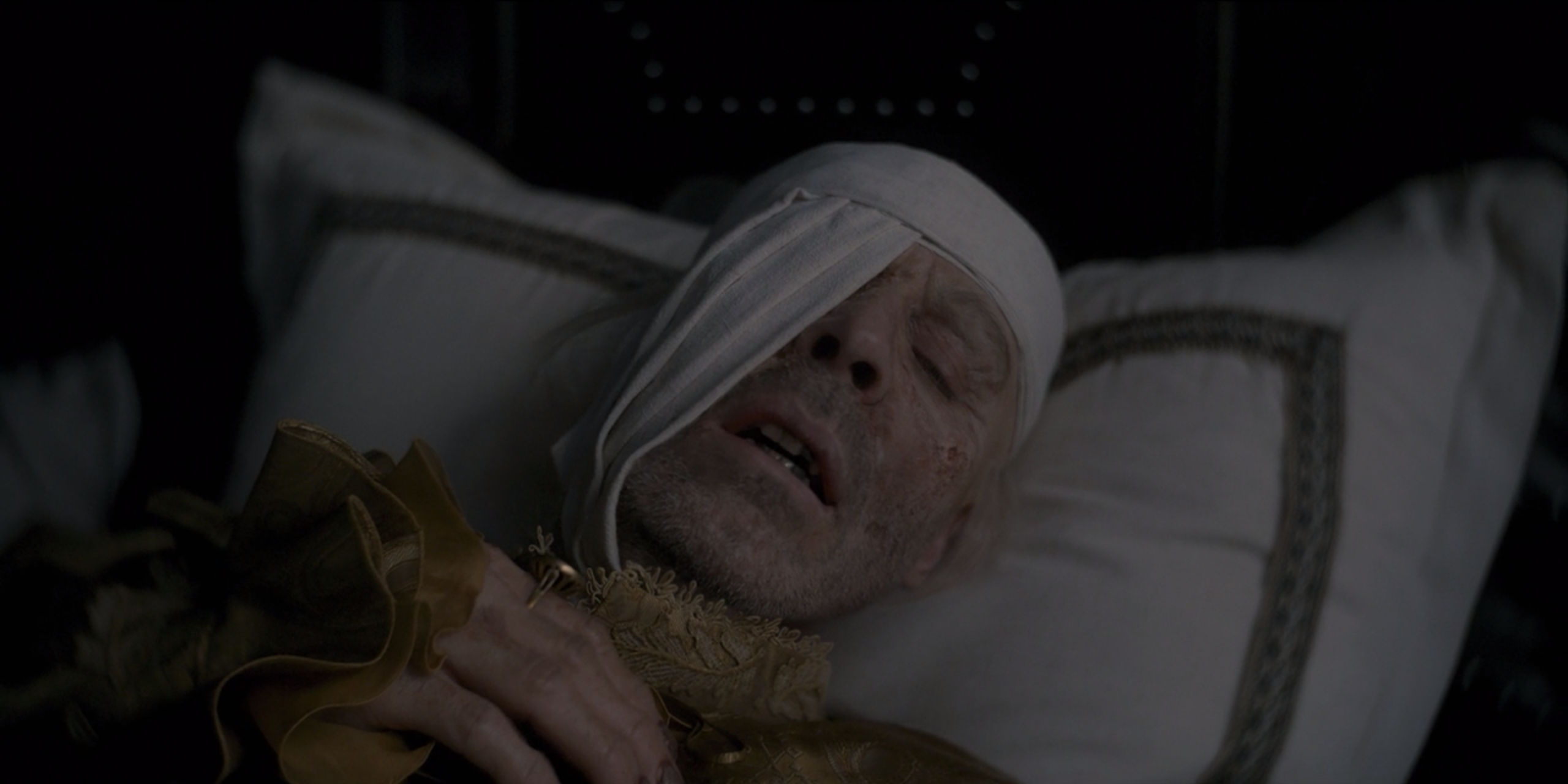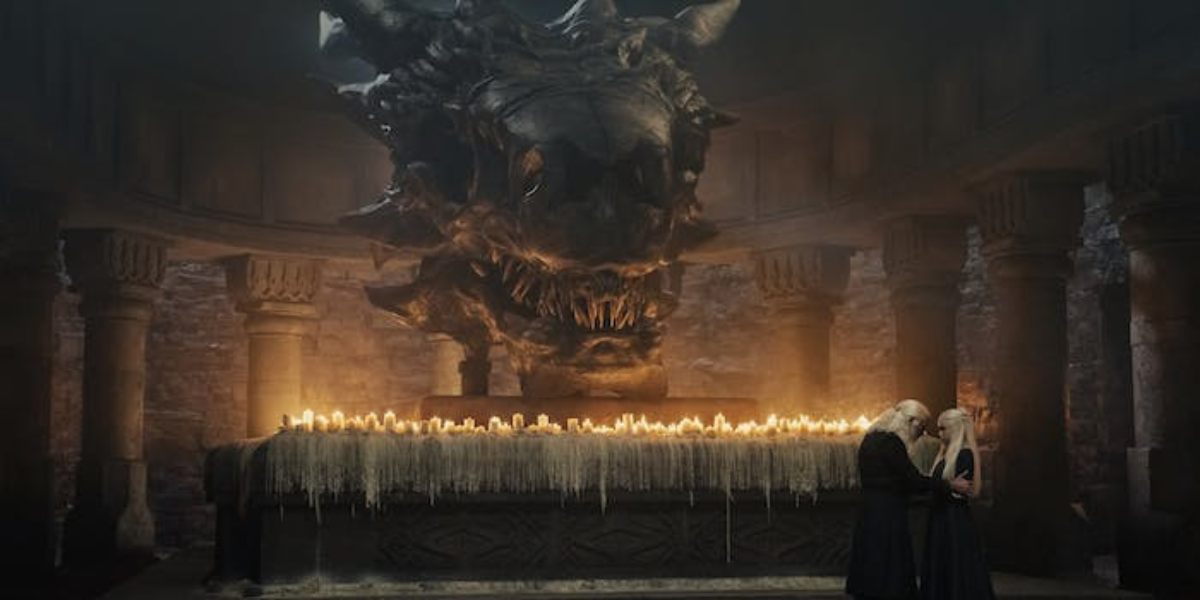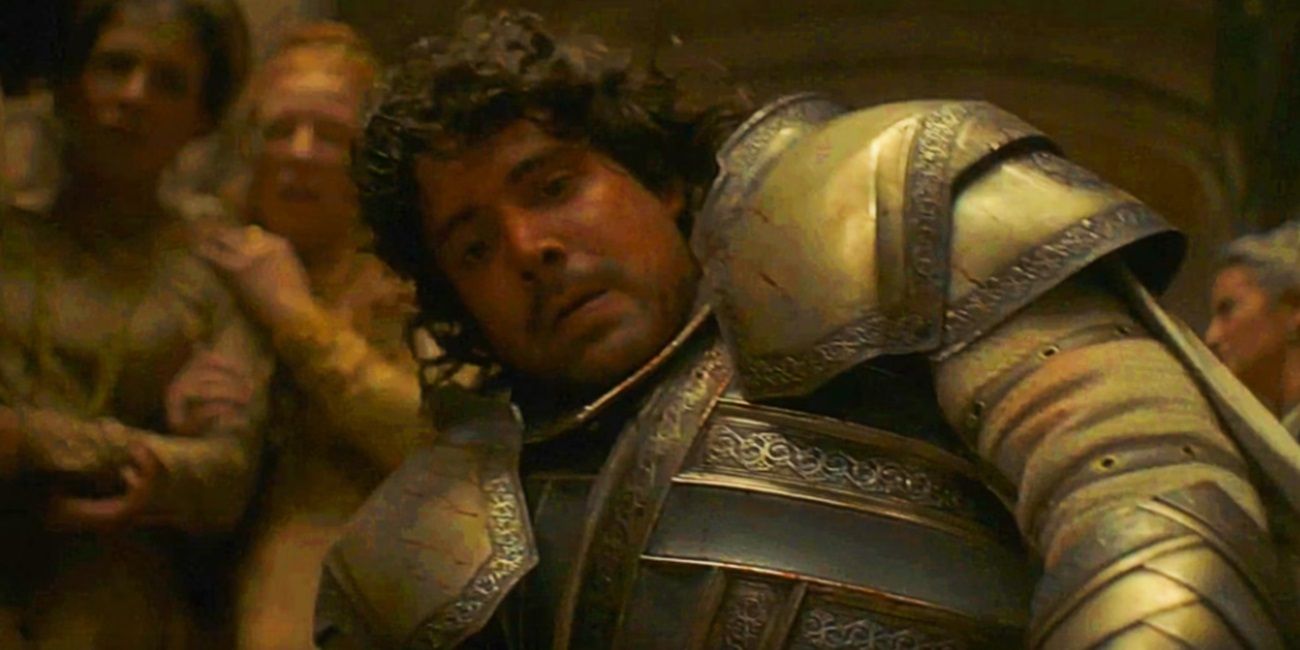With each episode, House of the Dragon continues to prove that it is a worthy successor to Game of Thrones. However, what makes it especially remarkable is the extent to which it manages to stay true to some elements of its source material while also not being afraid to chart its own course.
Some of the changes will no doubt be seen by zealous book readers as a form of retconning. However, given that the central conceit of Fire and Blood is that it is actually the work of maesters constructing a history from the ashes of the period, it is important to see some of these changes as, themselves, just another iteration of the making of “history.”
The Account Of Laena’s Death
Some of the saddest deaths on Game of Thrones were those of characters who were collateral damage of larger struggles. This is true in House of the Dragon as well, and Laena Velaryon’s immolation by her own dragon Vhagar is one of the most notable of the “retcons” that the series engages in since in the novel she dies before she ever reaches her dragon.
However, this particular change makes sense in the context of the series. In the world of Game of Thrones and House of the Dragon, there are always many accounts of a particular person’s death, and given that Laena’s happened in Pentos, it’s entirely possible the exact circumstances would have been left mysterious.
Aemma’s Death
From the very beginning, House of the Dragon made it clear that it was going to depict a very dark and dangerous world, particularly for women. The death of Aemma in childbed was particularly wrenching, especially since it departed from the source material and ascribed it to Viserys’ intervention.
In some ways, this is actually a combination of two different stories, incorporating the tragic fate of Alyssa Velaryon, who similarly was cut open in order to give birth to a child. Given that House of the Dragon is another iteration of a tragic period of history, it’s easy to see how the two stories could get intertwined.
Viserys’ Wasting Disease
Viserys is one of the most likable characters of House of the Dragon. He clearly loves his family and his realm and does what he can to preserve the peace. This is what makes his wasting disease all the more tragic, as it slowly robs him of his body.
Though there is no counterpart to this in the text, where he is instead jovial to the end of his days, it’s easy to see why the maesters would want to excise this particularly ugly fact. Far easier, from their point of view, to preserve kingly dignity rather than emphasizing the gruesome nature of his affliction.
Lord Beesbury’s Death
Many of the show’s most shocking events happen during the episode “The Green Council,” but one of the most brutal is the death of Lord Beesbury at the hands of Ser Criston Cole. His death, as stunning as it is, is still tamer than what happens in the book, where, according to one account, he is thrown onto the spikes outside Maegor’s Holdfast.
Like many differences between novel and series, this one can be ascribed to the showrunners deciding on one variant of history in order to make for a compelling story. Aside from everything else, even for a brutal series like House of the Dragon, it might have been too horrific to see Lord Beesbury killed by impalement.
Ser Criston’s Dalliance With Rhaenyra
Though Ser Criston might be one of the most notable members of the Kingsguard, he is also one of its most violent members. In large part, this can be ascribed to his decision to engage in a romantic dalliance with Rhaenyra, betraying his oath in the process.
This is one of the most notable moments of the series choosing a particular path that is only hinted at in the book. While some might see it as a convenient retcon, there is just enough ambiguity in Fire and Blood to make this a likely scenario, particularly as it helps to explain Ser Criston’s later profound antipathy toward the princess.
Laenor’s Escape
One of the most notable changes made to Fire and Blood in its screen adaptation is the survival of Laenor. In the book, he is slain during a quarrel with Ser Qarl, leaving Rhaenyra free to marry Daemon. In the series, by contrast, his death is a sham.
Rather than a piece of retconning, however, the series makes it clear how this might have transpired. The substitution of a guardsman for Laenor is a clever ruse and, as far as anyone else is concerned (including Laenor’s own family) he was the one who was left to burn in the fireplace.
The Circumstances Surrounding Alicent’s Infamous Green Dress
In the book Fire and Blood, Alicent first wears a green dress during a tourney at King’s Landing. It’s a pivotal moment, heavy with symbolism. In the series, by contrast, this happens during a banquet, and it allows her to make a daring entrance.
It seems to mark one of those moments where the series is retconning the circumstances. In actuality, however, this is a perfect example of how it might have been that the maesters compiling the fictional history would have chosen what they thought was the most likely sequence of events, rather than the one that actually occurred.
The death of Viserys is one of the most notable moments in House of the Dragon. Wrenching and full of pathos, it sets in motion the tragedies to follow. It seems to be a bit of retconning, as he is not shown dying in this way in the book, let alone whispering that he wanted Aegon to take the throne.
However, given that this conversation happened only between Alicent and Viserys, it’s easy to see how it would have been misinterpreted by the maesters. After all, they would not have had access to that privileged information.
The Prophecy Of Ice And Fire
Very early in the series, Viserys shares with Rhaenyra something that has been passed from one ruler to another, namely that Aegon the Conqueror invaded because he saw a perilous future. Aptly named “The Song of Ice and Fire,” this has helped to provide the Targaryens with a reason for their conquest.
This is, at first blush, a truly staggering retcon at first glance. However, in this instance, it does make sense. After all, if it has only been passed down through those who were fated to sit on the Iron Throne, it makes sense that it wouldn’t have made it to the general populace until this particular moment.
Ser Joffrey’s Death At The Banquet
Already, there have been many notable deaths in House of the Dragon. Of these, Joffrey’s brutal death at the hands of Criston Cole during the betrothal feast of Rhaenyra and Laenor is wrenching.
This is one of the changes that appears on the surface to be a retcon, as in Fire and Blood he is actually killed during a joust, and there is no indication Criston did so out of malicious intent. It’s entirely possible, though, that the exact circumstances of this were muddled by the maesters as they sought to figure out just what had transpired.


